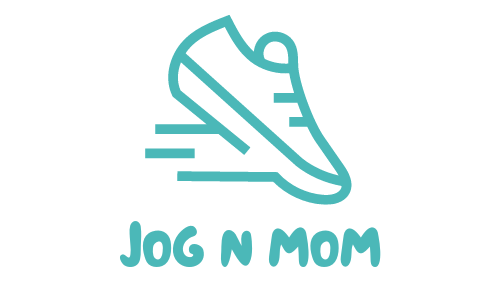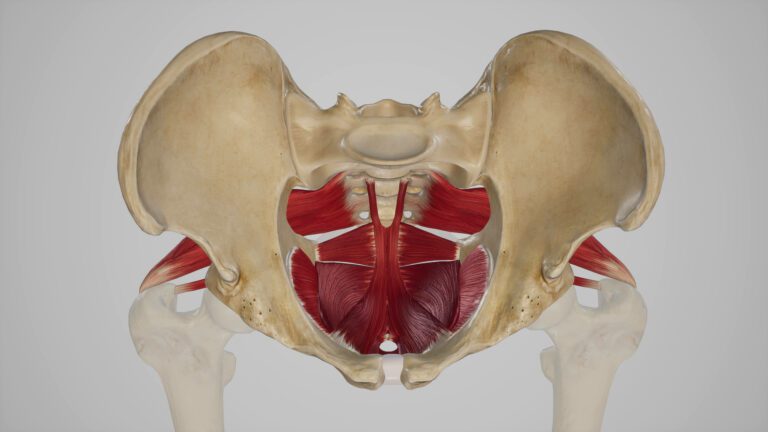Normal Core and Pelvic Floor Changes After Birth
Regardless of whether you had a C-section or a vaginal birth, your body will undergo significant changes post-pregnancy. As you look at yourself in the mirror, you might notice stretch marks, loose skin, loss of muscle tone, more weight than before birth, and other noticeable physical changes.
But what about the things that are hidden from the outside? For instance, you might feel unsure of what you’re even looking at when looking at yourself “down there.” You may wonder whether it’s safe to continue exercising if your abs bulge out while working out. You might even feel scared to touch your own C-section scar and wonder if you’re the only one who feels this way.
It is common to feel like a stranger in your own body after giving birth. Even if your doctor says everything is healing well and you can exercise again, you may still feel like everything is out of whack. This can be pretty confusing since you may not know what changes in your body are normal and what is a cause for concern.
It’s best to recognize which core and pelvic floor changes after birth are normal to help you regain confidence and know how to respond to each change.
Changes in Balance
During pregnancy, a woman’s center of gravity shifts as her belly grows.
Additionally, the mother’s feet may widen, which can affect her balance. Although many women assume that their feet are only swollen and will return to their pre-pregnancy size, it’s common for the feet not to return to their previous size after birth. The hormone relaxin causes the ligaments and joints to loosen and spread out, often resulting in permanent change.
Weak core and lower body strength can also cause balance problems that persist after delivery.
Response
This is all normal. To help with these issues, getting new shoes may be necessary. I highly recommend getting your gait checked at your local running store before returning to running or high-impact exercise.
Practicing some balance exercises during the postpartum period will be helpful as well, such as single-leg balance exercises.
Changes in Stability
While balance refers to the ability to maintain a steady posture and avoid falls, stability is the core’s ability to brace the body for impact and sudden movements.
When riding a bus, have you noticed your core instinctively tightening right before hitting a bump? This is your core stabilizing itself, preventing you from being knocked over.
During pregnancy, as the baby and uterus grow, they take up more space in the abdomen, reducing the need for back and abdomen muscles to work to stabilize the body. However, after pregnancy, these muscles need to be reactivated to prevent the body from hanging loosely on the spine, which can cause back pain, pelvic floor weakness, and core weakness.
Response
To address stability after giving birth, it is essential to rebuild the core and pelvic floor’s strength and coordination. This is easiest by following a quality, evidence-based program such as the Recore Fitness Postpartum Program.
Posture
During pregnancy, a woman’s posture changes due to the growth of her baby and belly.
The extra weight in her belly can cause her back to arch excessively and the pelvis to tilt forward, resulting in a “swayback” position. This posture can lead to tight back muscles that become overworked as the abdominal muscles weaken.
Another tendency is for mothers to clench their glutes to support the pelvis and belly. Also, their shoulders may hunch forward due to frequently holding or nursing the baby.
Unfortunately, these postural tendencies may not resolve naturally after birth. Many mothers may continue to maintain these habits while feeding, wearing, or holding their babies because this continues to add weight to the front of their bodies.
Response
Reactivating the core muscles can help relieve back pain and improve posture by allowing the back muscles to relax. Following a quality core rehab program for postpartum women can help restrengthen and coordinate these muscles.
It is essential to address posture in daily activities. You can start by practicing finding a neutral spine position while lying on your back, on all fours, sitting, and standing. To do this, tilt your pelvis completely forward, then entirely back, and then find a comfortable resting place in the middle. Keep your shoulders down and back instead of allowing them to roll forward or climb up toward your ears.
Keep rechecking and correcting your posture throughout your day to help retrain muscle memory. If you experience low back pain or other pain related to posture, it may be necessary to seek treatment from a pelvic floor physical therapist.
Stretched and Weakened Muscles
During pregnancy, the abdominal muscles undergo significant stretching as the uterus and baby grow. This weakens the muscles, as they lose their ability to move throughout their full range of motion.
Additionally, the rectus abdominis muscles separate to create space for the baby. This process is known as diastasis and occurs in every pregnancy. However, a cause for concern arises if the tissue fails to return to its original state after childbirth, leaving a weakened gap known as diastasis recti.
If you have a C-section, the abdominal muscles are cut through in major surgery, which requires a little more recovery time. Scar tissue may desensitize and immobilize the area where the incision was made.
If you delivered your baby vaginally, there is a possibility that your perineum’s skin or muscle may have torn. Although it can heal back to normal, it may leave a scar. If the muscles were torn in a second-degree or higher tear, the chances of experiencing pelvic floor dysfunction are higher.
It is common for women who have had a vaginal birth or have pushed before having a C-section to experience loose muscle tone in the pelvic floor. However, changes in appearance alone should not be a cause of concern. It is essential to focus on the function instead and make sure you are not feeling any pain or having any other symptoms of dysfunction, such as leaking.
Response
I hate to sound like a broken record, but this is yet another reason to follow a quality core and pelvic floor rehab program postpartum. These muscles require the same treatment as any other muscular injury, focusing on giving time to heal and then slowly increasing load to help the muscles regain strength.
Restoring comfort and mobility to scar tissue is possible with scar mobilization techniques.
Breathing and Pressure Management
The diaphragm is a muscle that sits under our lungs and allows us to breathe correctly. However, during pregnancy, the diaphragm doesn’t move in its full range of motion due to the growing uterus that occupies the space beneath the lungs. This weakens the muscle and makes taking full, deep breaths difficult for pregnant women.
It is not always guaranteed that your breathing will return to normal after giving birth. A common incorrect breathing pattern is to breathe by using your neck and chest muscles to inhale instead of using your diaphragm to help your lungs expand.
The ability to manage the pressure (air) inside the core is known as pressure management. As physical movements become more difficult, the pressure increases. For instance, when lifting something heavy, people tend to tighten their throats and grunt due to the increased pressure. During pregnancy, the baby and uterus occupy more space in the abdomen, which reduces the need for the back and abdomen muscles to work to manage pressure.
After giving birth, the uterus is suddenly empty and gradually shrinks back to its original size. The core muscles then need to relearn how to manage the pressure as the abdomen fills with air, and the diaphragm gains the ability to reach its full range of motion, allowing the mother to take full, deep breaths again.
If you don’t breathe evenly and your muscles are uncoordinated or too weak to manage pressure, it can lead to other dysfunction symptoms. For example, if you only breathe into your belly, it can cause damage to your core, which can lead to diastasis that is hard to repair. On the other hand, if your pelvic floor is loose and weak, it may struggle to manage pressure and continue to be weakened.
Experiencing pressure mismanagement postpartum is common, but not normal and should not be ignored. Signs of it include:
- coning during abdomen exercises
- doming during abdomen exercises
- pelvic floor heaviness
- low back pain
- prolonged diastasis recti
Response
It is crucial to practice diaphragmatic breathing soon after delivery. Even if you have not given birth recently, practicing diaphragmatic breathing to coordinate your core, pelvic floor, and diaphragm together is a great idea.
Breathing in a 360-degree circle and feeling your abdomen, pelvic floor, back, and sides expand with inhales instead of only into your belly can help you learn to manage pressure. Again, rebuilding your core and pelvic floor’s strength is vital in managing pressure correctly.
Conclusion
The core and pelvic floor changes listed above after giving birth are normal. However, if these changes are left unattended, they can lead to dysfunction, which will be discussed in another blog post soon.
Even if you have had an easier delivery and haven’t experienced any tearing, rebuilding your core and pelvic floor muscles is essential. This is the easiest to do when following a quality, evidence-based plan like the Recore Fitness Postpartum Plan. It is also important to address other residual side effects of giving birth, such as the possible need to size up in shoes.
Taking the time to learn about your body and prioritizing your health after giving birth will enable you to resume activities you love and perhaps even become stronger than you were before. It will undoubtedly help you become an amazing mom who can lead and love from a place of humble growth and strength.
Did you experience any confusing or unusual postpartum core and pelvic floor changes? How did you handle them? Do you have any advice or additional changes to share? Leave a comment below!






